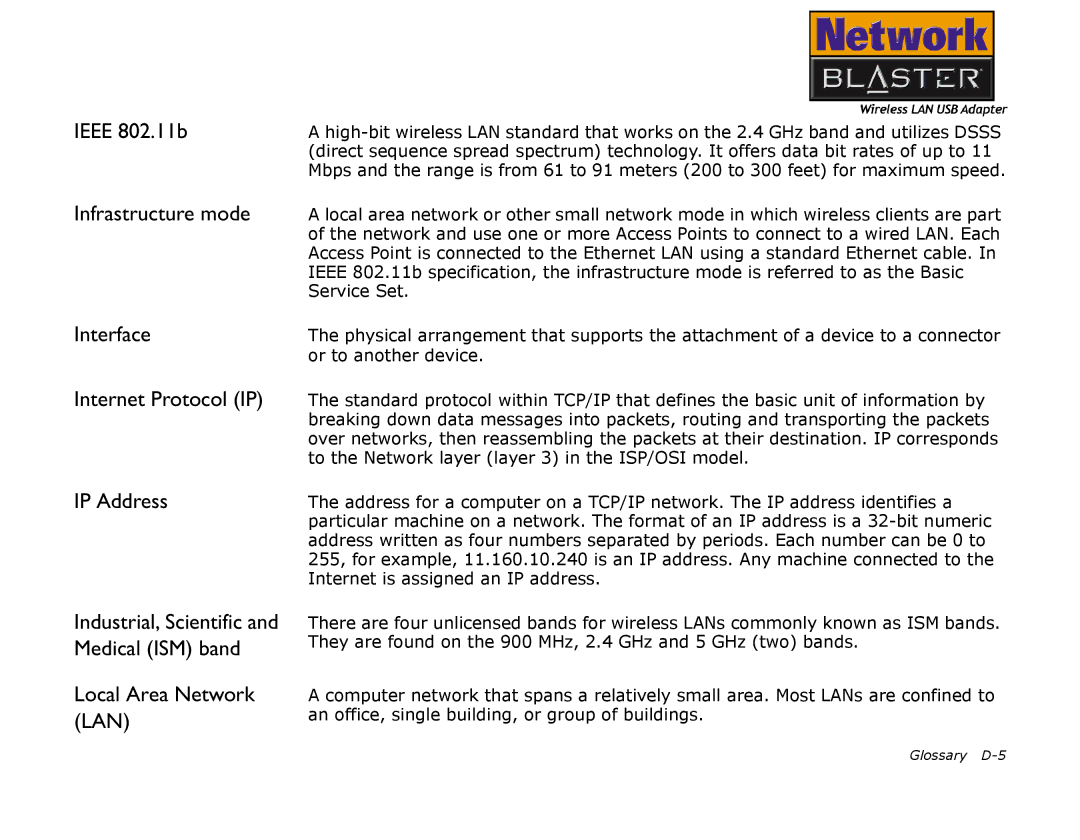
IEEE 802.11b
Infrastructure mode
Interface
Internet Protocol (IP)
IP Address
Industrial, Scientific and Medical (ISM) band
Local Area Network (LAN)
A
A local area network or other small network mode in which wireless clients are part of the network and use one or more Access Points to connect to a wired LAN. Each Access Point is connected to the Ethernet LAN using a standard Ethernet cable. In IEEE 802.11b specification, the infrastructure mode is referred to as the Basic Service Set.
The physical arrangement that supports the attachment of a device to a connector or to another device.
The standard protocol within TCP/IP that defines the basic unit of information by breaking down data messages into packets, routing and transporting the packets over networks, then reassembling the packets at their destination. IP corresponds to the Network layer (layer 3) in the ISP/OSI model.
The address for a computer on a TCP/IP network. The IP address identifies a particular machine on a network. The format of an IP address is a
There are four unlicensed bands for wireless LANs commonly known as ISM bands. They are found on the 900 MHz, 2.4 GHz and 5 GHz (two) bands.
A computer network that spans a relatively small area. Most LANs are confined to an office, single building, or group of buildings.
Glossary
